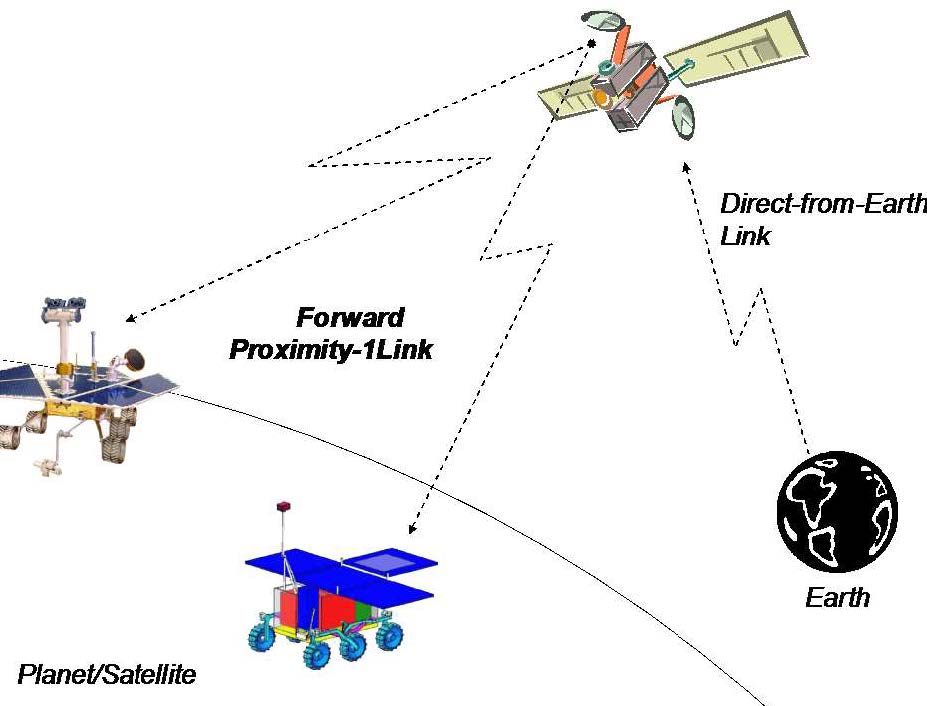Special | A | B | C | D | E | F | G | H | I | J | K | L | M | N | O | P | Q | R | S | T | U | V | W | X | Y | Z | ALL
Proximity-1 Space Link Protocol | ||||||||||||
|---|---|---|---|---|---|---|---|---|---|---|---|---|
Proximity-1 covers the data link layer [CCS20d] and physical layer [CCS13b]. Proximity-1 enables communications among probes, landers, rovers, orbiting constellations, and orbiting relays in a proximate environment, up to about 100,000 km [CCS13c]. These scenarios are devoid of manual intervention from ground operators, and furthermore, resources such as computational power and storage are typically limited at both ends of the link. In fact, Proximity-1 has been field-tested in the 2004-2005 Mars missions; see Figs. 1-2 for illustration.
In contrast, the AOS/TC/TM Space Data Link Protocols are meant for Earth-deep space links, over extremely long distances. Proximity-1 supports symbol rates of up to 4,096,000 coded symbols per second. Designed for the Mars environment, the physical Layer of Proximity-1 only uses UHF frequencies [CCS13b, Sec. 1.2]. The frequency range consists of 60 MHz between 390 MHz to 450 MHz with a 30 MHz guard-band between forward and return frequency bands, specifically 435-450 MHz for the forward channel and 390-405 MHz for the return channel [CCS13b, Sec. 3.3.2]. References
| ||||||||||||

